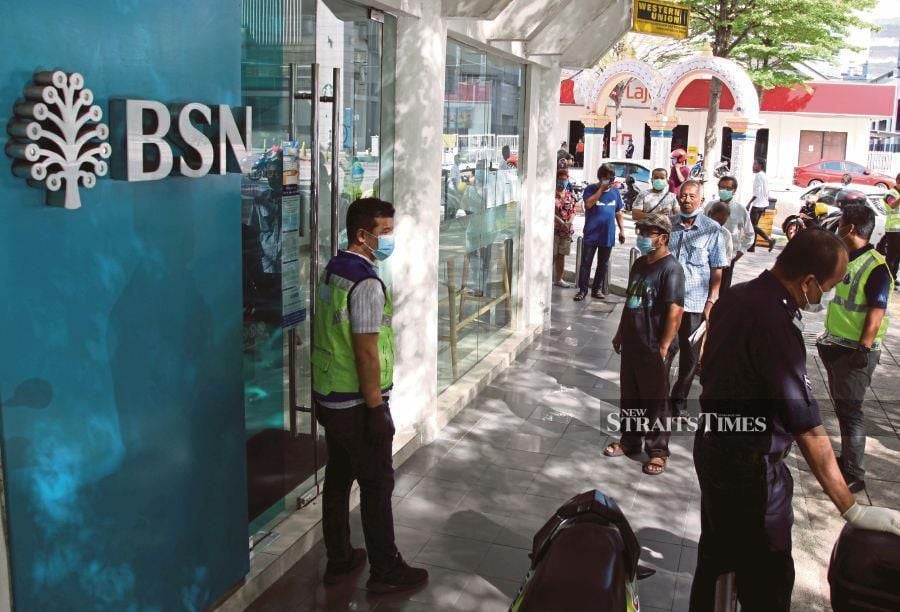NO one knows what is the best way to combat Covid-19. The fight will continue for quite a while unless and until we are ahead of the curve.
To tackle a situation where the enemy is invisible and not discriminatory requires extreme measures. Thus, every citizen has high expectations of the Prihatin Rakyat stimulus package. Furthermore, up to this point, another RM10 billion was added for wage subsidies for small and medium enterprises. The total cost of the financial aid is RM260 billion.
I have to make two assumptions. Firstly, the RM225 billion allocated to the second pillar is for the guarantee of liquidity. This is crucial because the assurance of liquidity strengthens market confidence. Secondly, I assume RM35 billion comprises two big components, viz. A cash handout of RM30 billion, and infrastructure investment of RM5 billion.
The first pillar is crucial. There are two multiplier effects. First, the cash handout of RM30 billion. Because of salary reduction in various groups of income, the short-term cash certainly helps. I assume the marginal propensity to consume — the amount used for consumption with a RM1 increase in income — is 80 per cent. Theoretically, the multiplier effect is RM150 billion (nearly 10 per cent of national income).
This amount is five times more than the injected money. This is a crucial takeaway. Cash handouts are vital for many workers’ livelihoods for at least the next two months because presently they are already on no-pay leave or on lower income. The support surely helps them to stay above the relative poverty line with a reasonably decent living standard in food and shelter.
Regarding the RM5 billion investment in infrastructure, the multiplier effect is the sum of two sources. I assume their marginal propensity to consume is also 80 per cent. Hence the multiplier effect is RM25 billion. This is about 1.7 per cent of national income and five times larger than the investment.
The above shows RM35 billion generates RM175 billion worth of national income. How significant is the result? If the Movement Control Order persists until the end of May, national output will likely contract by a quarter. That means if the projected growth rate before Covid-19 was 4.5 per cent, it will decline to 3.4 per cent. RM175 billion is more than sufficient to make up for the loss.
Malaysia’s national debt to GDP ratio is about 53 per cent whereas the primary balance (i.e. revenue minus expenditure, excluding interest payments from expenditure) on average is about 3.0 per cent of GDP. RM35 billion is about 2.3 per cent of GDP.
To what extent will RM35 billion be accrued to national debt? The convergence rate is 2.0 per cent (or 0.02), and therefore the half-life (i.e. 50 per cent) is 35 years.
To simplify, I postulate that the national debt and growth rate is 100 per cent (the actual figure is about 53 per cent) and 4.0 per cent (it was between 4.0 and 4.5 per cent in past years), respectively. The national debt will stabilise at 150 per cent of GDP in 2055. That means national debt will increase 50 per cent from 2020 to 2055.
Government responses are necessary evils. This intervention is not a panacea but it supports aggregate demand in preventing ferocious economic deceleration. However, in 2020 and beyond, it is not sufficient to rejuvenate the usual vibrancy to the level before the outbreak. Hence Putrajaya needs to organise practical measures to prevent a severe contraction in the supply side at the micro level.
The government can minimise the reduction in the supply side by permitting companies to resume production from mid-April. The resumption certainly requires the assurance of strict compliance with preventive measures.
Public investment can cloud out private investment. But that is not an issue here. Firstly, the interest rate is low; secondly, if public investment is targeted at strengthening long-term resilience, it will drive up labour productivity.
The stimulus in 2020 not only will generate a reasonably large multiplier effect in 2021 but in 2022 and beyond too. Building on this anticipated positive outcome, Malaysia will surely perform even better if more effort is made to transform the economy to a higher level of labour productivity post-Covid-19.
The writer is a professor at Reitaku University, Tokyo, and has been teaching Southeast Asia studies, international economics, integration, development economics and Asian economy since 1983
The views expressed in this article are the author’s own and do not necessarily reflect those of the New Straits Times







